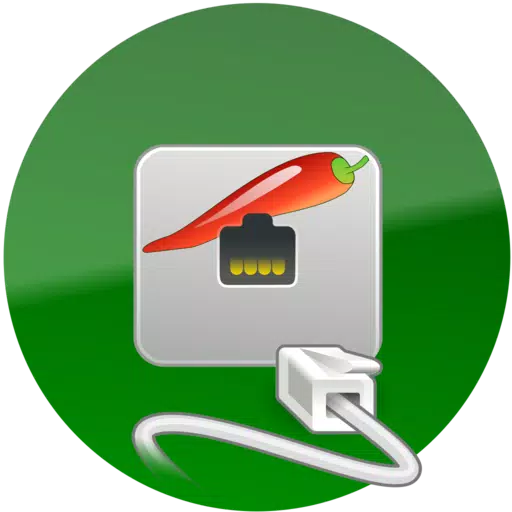aSPICE: Secure SPICE Client

Category:Productivity Developer:Iordan Iordanov (Undatech)
Size:60.6 MBRate:4.0
OS:Android 5.0+Updated:May 07,2025

 Download
Download  Application Description
Application Description
Looking for a secure, open-source SPICE and SSH remote desktop solution for your QEMU KVM virtual machines? Look no further than aSPICE. Whether you're on iOS or macOS, you can now experience the power of aSPICE with the latest version available at aSPICE Pro on the Apple App Store. By choosing the donation version, aSPICE Pro, you not only enhance your remote desktop experience but also support GPL open-source software. If you encounter any issues, please use the "Send email" button in Google Play to reach out before leaving a review.
Stay updated with the latest changes through the release notes at GitHub. For older versions or to report bugs, visit releases and issues respectively on GitHub. If you have questions, the forum at Google Groups is a great resource. Don't forget to check out bVNC, another excellent VNC Viewer by the same developer, available on Google Play.
Is your mouse pointer out of sync with your taps? No worries! Switch to "Simulated Touchpad" input mode, or for an even smoother experience, add an "EvTouch USB Graphics Tablet" to your virtual machine. Here's how to do it:
- If you're using virt-manager, navigate to View->Details, and select Add Hardware->Input->EvTouch USB Graphics Tablet.
- If you're running your virtual machine from the command line, use an option like: "-device usb-tablet,id=input0".
aSPICE is not just any SPICE protocol client; it's a secure, SSH-capable, open-source solution leveraging the LGPL licensed native libspice library. Its impressive features include:
- Control any SPICE-enabled qemu virtual machine running ANY guest OS.
- Master password support in aSPICE Pro.
- MFA/2FA SSH authentication in aSPICE Pro.
- USB Redirection in aSPICE Pro.
- Audio support.
- Multi-touch control over the remote mouse: one finger tap for left-click, two-finger tap for right-click, and three-finger tap for middle-click.
- Sound support, configurable in Advanced Settings on the main screen.
- Right and middle-dragging without lifting the first finger that tapped.
- Scrolling with a two-finger drag.
- Pinch-zooming.
- Dynamic resolution changes, allowing desktop reconfiguration while connected, and control from BIOS to OS.
- Full rotation support; use the central lock rotation on your device to disable it.
- Multi-language support.
- Full mouse support on Android 4.0+.
- Full desktop visibility even with the soft keyboard extended.
- SSH tunneling for added security or to reach machines behind a firewall.
- UI optimizations for different screen sizes, catering to both tablets and smartphones.
- Samsung multi-window support.
- SSH public/private (pubkey) support.
- Importing encrypted/unencrypted RSA keys in PEM format, and unencrypted DSA keys in PKCS#8 format.
- Automatic connection session saving.
- Zoomable, Fit to Screen, and One to One scaling modes.
- Two Direct, one Simulated Touchpad, and one Single-handed input modes.
- Long-tap to access a choice of clicks, drag modes, scroll, and zoom in single-handed input mode.
- Stowable on-screen Ctrl/Alt/Tab/Super and arrow keys.
- Send the ESC key using your device's "Back" button.
- Use the D-pad for arrows, and rotate it for some Bluetooth keyboards.
- Minimum zoom fits the screen, and snaps to 1:1 while zooming.
- FlexT9 and hardware keyboard support.
- On-device help for creating new connections and understanding input modes, available in the Menu.
- Tested with Hackerskeyboard; using it is recommended (available on Google Play).
- Import/Export of settings.
- Samsung DEX, Alt-Tab, Start Button, and Ctrl+Space capture.
Planned features include clipboard integration for seamless copy/pasting from your device. For detailed instructions on using SPICE with Linux, visit the guides by Red Hat at Linux KVM and by Ubuntu's Canonical at Ask Ubuntu. Explore the code and contribute to the project at GitHub.
 Reviews
Post Comments+
Reviews
Post Comments+
Great app for managing my QEMU KVM virtual machines! The interface is clean, and the SSH connection is super secure. Had some initial setup hiccups, but once configured, it works like a charm. Highly recommend for remote desktop needs!
 Latest Apps
MORE+
Latest Apps
MORE+
-
 Scratch
Scratch
Education 丨 75.2 MB
 Download
Download
-
 Astroweather
Astroweather
Weather 丨 13.9 MB
 Download
Download
-
 Zangi Private Messenger
Zangi Private Messenger
Communication 丨 42.90M
 Download
Download
-
 Google Maps Go
Google Maps Go
Tools 丨 1.00M
 Download
Download
-
 Security Craft Mod Minecraft
Security Craft Mod Minecraft
Tools 丨 8.40M
 Download
Download
-
 Hairstyle Changer Pro
Hairstyle Changer Pro
Lifestyle 丨 27.30M
 Download
Download
 Similar recommendations
MORE+
Similar recommendations
MORE+
 Top News
MORE+
Top News
MORE+
 Topics
MORE+
Topics
MORE+
- Best Apps for Following Current Events
- Essential Media and Video Tools for Android Users
- Top Photography Apps for Beginners
- Best Beauty Apps for Makeup Tutorials
- Realistic Simulation Games Collection
- Engaging Role Playing Experiences on Android
- Addictive Offline Games You Can Play Without Internet
- Top Casual Games for Mobile
 Trending apps
MORE+
Trending apps
MORE+
-
1

Migraine Buddy: Track Headache68.57M
Discover Migraine Buddy: Track Headache: Your Ultimate Migraine CompanionJoin the 3.5 million migraine sufferers who trust Migraine Buddy: Track Headache, the app designed to help you understand and manage your migraines. Here's how Migraine Buddy: Track Headache can help you: Pinpoint Patterns: Quickly identify triggers and patterns in your mi
-
2

Обои для Стандофф 2 HD22.39M
Experience the adrenaline-pumping world of Standoff 2 like never before with "Wallpapers for Standoff 2." This must-have app is a treasure trove of vibrant and epic wallpapers that will transport you straight into the heart of the game. Whether you're a fan of popular characters, powerful weapons, t
-
3

Smart Life - Smart Living53.49M
The Smart Life app revolutionizes the way we control and manage our smart devices, bringing convenience and peace of mind to our everyday lives. This user-friendly app makes connecting and controlling a wide range of smart devices easier than ever before. Effortlessly set your devices to function ex
-
4

RealVNC Viewer: Remote Desktop6.5 MB
Access your computer from anywhere using RealVNC Viewer! This Android app transforms your phone into a remote desktop, providing seamless control of your Mac, Windows, and Linux machines. RealVNC Viewer lets you remotely view and control your computer's desktop, mouse, and keyboard as if you were s
-
5

Cuevana 8 Mod11.43M
Cuevana 8 Mod APK is a leading app in the world of streaming, offering a wide range of high-quality movies and series. This app, which originates from the renowned Cuevana website, has been providing top-notch content for over two decades. Cuevana 8 Mod APK is popular for its user-friendly interface
-
6

MotorSureVAGCar Diagnostics133.3 MB
MotorSure for VAG: Your All-in-One VAG Car Diagnostic App MotorSure for VAG is a comprehensive app tailored for owners of Volkswagen, Audi, Skoda, SEAT, Bentley, and Lamborghini vehicles. Paired with the MotorSure OBD tool, it provides professional-grade diagnostics, maintenance services, and easy





6.5 MB
Download36.35M
Download184.57M
Download14.48M
Download44.00M
Download44.03M
Download